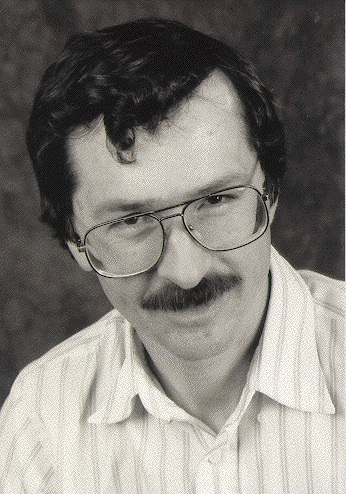Edwin D. Waddington, Professor
Biographic Details
Directory ListingPublications
Curriculum Vitae
 Office: ATG-715 (Mailing Address)
Office: ATG-715 (Mailing Address) Phone: 206-543-4585
Fax: 206-543-0489 (shared)
E-Mail: edw*
* to send email, replace * with @uw.edu
Areas of Interest:
Glacier and ice sheet dynamics, paleoclimates
Research Groups:
Glaciology
Quaternary Research
Other UW Academic Affiliations:
Adjunct Professor, Quaternary Research Center
Education:
Ph.D., Geophysics, University of British Columbia, Vancouver, 1981
Current Research:
I study glaciological problems related to derivation and interpretation of paleoclimate records from polar ice cores.
Ice found at different depths in a core may have come from very different places on the ice sheet surface, depending on the history of flow on a dynamic and changing ice sheet. In order to unravel the paleoclimate signals recorded in the ice, my students and I measure surface velocities and strain rates on ice sheets using GPS and optical methods. We also use ice-penetrating radar to detect internal layering (isochrons) within the ice. We combine these data with computer models of ice flow, to derive the ice flow patterns at depth. Then we can calculate the age scale for the geochemical climate signals locked in the ice. We also study other climate signals related to ice dynamics. We derive snowfall rates in the past by combining observed thicknesses of annual layers with ice dynamical predictions of the thinning they have undergone due to ice flow.
Finally, we study ice dynamical processes that can alter the ice core climate record. Basal melting can remove the oldest ice. Since ice can be an inhomogeneous and anisotropic material, internal flow instabilities such as boudinage, shear zones, and kink banding can disrupt the stratigraphic record. We currently study the potential for developing overturned folds due to transient flow, and are also starting to investigate the role of anisotropic crystal fabric in flow disturbances.
In a collaborative research program with Gary Clow of the U.S.G.S., we have measured the temperature variations with depth in the 3 km deep GISP2 borehole in central Greenland. The data, when interpreted with ice dynamical and thermodynamical models, reveal a smoothed version of the paleotemperature history at the site, and show that, in central Greenland, the temperature change coming out of the last ice age was nearly twice as large as previously estimated. We have also logged the Taylor Dome borehole (554 m deep) and several shallower boreholes on a transect through the Transantarctic Mountains in Victoria Land.
In order to understand ice core records, we must first understand the physical processes by which atmospheric tracers are incorporated into snow and ice. I study wind-driven ventilation of permeable polar snow and firn, because this can affect the capture rates for aerosol particles, and the rates at which volatile impurities in snow can equilibrate with atmospheric concentrations. All these constituents of polar ice can be important indicators of paleoclimate conditions. The associated inverse problem, i.e. how much is it possible to learn about the paleo-atmosphere from ice cores, promises to be a new and exciting research topic.
My current research focuses on: ice flow models for central Greenland to enhance the value of the ice core paleoclimate records obtained from the GRIP and GISP2 coreholes there; inversion of temperature-depth data in ice sheets to derive climate forcing histories; studies of ice flow, internal layering, ice temperatures, and weather characteristics at Taylor Dome, Antarctica, for a University of Washington paleoclimate ice coring program there; ice dynamical studies of Siple Dome, the most recent U.S. ice coring site in West Antarctica.
Graduate Students:
Regina Carns
Adam Campbell
Michael Hay
Dan Kluskiewicz
C. Max Stevens
